The story of how the king treated osteonecrosis persists to this day. 150-200 grams of mustard was placed in a large vat filled with hot water, and the king, an accomplished hunter for a pleasant and useful pastime in the hot bath, slowly soaked it up to his neck. . The procedure ends with a tea party.

The next morning, the ruler was ready for the next military campaign.
What is osteonecrosis and how is it treated today?
The dangers of "inflexible" disease
Osteochondrosis makes a person inflexible - a subtle aphorism that accurately describes the consequences of degenerative changes in the intervertebral disc, the progression of which leads to its destruction.
The disc loses its "elastic" ability, becomes covered with cracks due to increasing pressure, and its contents are "squeezed out" over time - a herniated disc is formed.
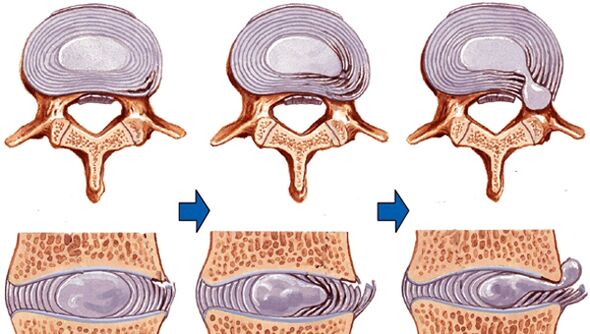
Leaking fluid compresses the nerve endings of the spinal cord, disrupting the "connections" between all of a person's internal organs. Therefore, thoracic osteonecrosis lasts many years to treat gastritis or find the cause of a heart attack; Lumbar or bone marrow degeneration can cause partial or complete paralysis of the lower extremities and the cervix - further complicating the blood supply to the brain.
Sometimes this disease affects some parts of the "pillar of life" - widespread osteonecrosis of the spine develops, the treatment criteria are the same as described below, but the recovery process is the same. Recovery requires more effort on the part of the patient and the doctor.
Cartilage and bone tissue of the leg joints are also destroyed by the processes. Shooting pain with movement, calf muscle cramps and pain, numbness of the fingers, and decreased skin sensitivity of the legs have been associated with lumbosacral osteonecrosis.
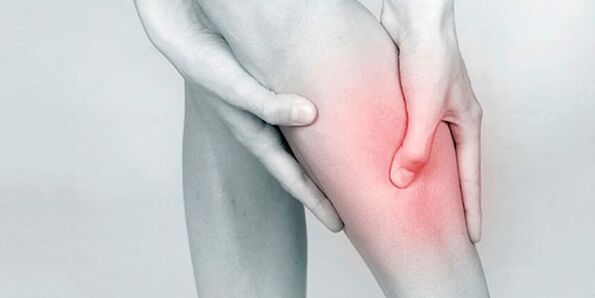
However, these symptoms often indicate osteonecrosis of the leg, treatment begins with a visit to a neurologist and is successfully carried out with the help of classical massage, manual therapy, chiropractic and acupuncture.
And how to cure spina bifida? Indeed, over time, the body compensates for the "missing" height of the intervertebral discs with the growth of bone tissue of the vertebral bodies and, together, that growth immobilizes the individual segments. odd of the "life axis".
How to treat exacerbation of osteonecrosis?
In addition to the rapid relief of pain, the primary goals of treatment for severe osteonecrosis are to eliminate muscle spasms and counteract swelling of the inflamed tissues that are compressing the nerve roots.
In the acute phase, modern standards for the treatment of osteonecrosis prescribe a treatment that is aimed at dismantling the spine and eliminating pain:
- In the acute period, especially when there is a herniated disc, the patient is treated with postural - strict bed rest, for at least 6 days;
- Analgesics contribute to the reduction of inflammation and pain; often with osteonecrosis, analgesics are prescribed, as well as NSAIDs;
- With severe, stable pain syndrome, appoint local anesthetic injection with glucocorticoid or novocaine. With severe osteonecrosis, these drugs provide a prolonged analgesic effect;
- With unbearable pain, difficulty sleeping in osteonecrosis, the use of hypnotics and sedatives is recommended;
- With increased tone of the muscles of the back and lower extremities, muscle relaxants of central action are prescribed;
- When decompressing the spine, diuretics are used to reduce swelling;
- Local treatment of pain in osteonecrosis is provided with ointments and gels with anti-inflammatory components. They are applied at the localized pain site;
- To optimize the blood supply to the spine, vasopressors and venotonics are prescribed, which help to remove blockages in the blood, as well as nicotinic acid, which is a vasodilator;
- Surgery is often the only definitive solution to paralysis.
Where do we treat osteonecrosis?
As a rule, the patient undergoes a kind of circle - hospital - clinic treatment - hydrotherapy or nursing - home treatment under the supervision of a doctor.
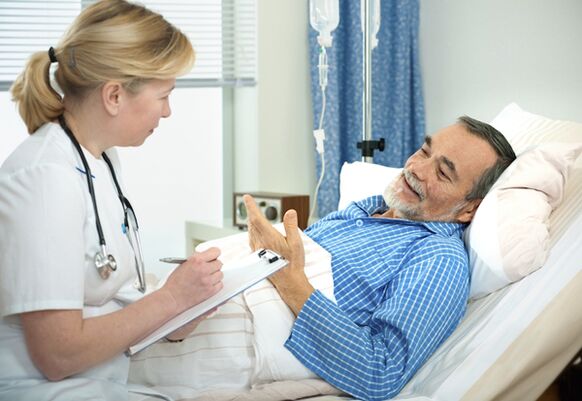
Usually, even in the acute stage, the treatment is carried out at home, however, with the low effectiveness of the listed therapeutic measures, the problem of the patient's hospitalization is decided.
Recovery time for osteonecrosis
After the acute phase, efforts should be directed to inhibit destructive processes and to optimize local blood flow and metabolism. The expected outcome of the treatment is the maximum recovery of cartilage tissue.
The goal of the next phase of osteonecrosis treatment is to eliminate the consequences of neurological complications and to prevent future exacerbations, to prevent further degeneration of the soft "components" of the spine.
How do we treat osteonecrosis in the recovery phase?
Reception of pharmaceutical preparations at this stage continues. The most important of them are vitamins A, E, P, C and most of the "representatives" of group B, which strengthen the walls of blood vessels and restore the normal "process" of nerve impulses, as well as chondoprotectors. Then there is cartilage extract - a type of bone-building pill that stimulates the recovery of "saggy" cartilage tissue. Anti-inflammatory ingredients are often added to their composition, which helps to reduce the dose of NSAIDs. Chondoprotectors are taken without exacerbating the pain syndrome.
To enhance the action of oral chondoprotectors, it is recommended to use osteonecrosis cream, as well as ointments with chondroitin and glucosamine components.
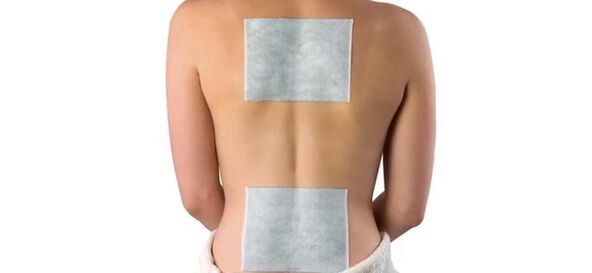
The relatively new and good remedy for osteonecrosis is the patches.
Small pieces of cloth with an adhesive surface that help retain heat, anesthetize, and slow destruction at the attachment site:
- Chinese osteonecrosis patch, which contains herbal ingredients and beeswax, accelerates the final subsidence of inflammation and relaxes muscles. With the disappearance of pain, metabolic processes are normalized, and with them - thermogenesis of the segment is affected;
- Pepper plaster for the treatment of osteonecrosis, due to the presence of belladonna "burns", turpentine and pepper, stimulates the blood supply to the problem area, eliminates muscle spasms and accelerates the swelling of thenerve root compression tissues;
Physiotherapy and alternative therapies
Once the inflammation is in remission, further recovery in the presence of complications of osteonecrosis is accomplished by non-drug exposure methods. The focus in treatment is on turning to physical therapy and alternative methods.
The main goal of this period was to expand the mechanized regime.
How to get rid of osteonecrosis without drugs:
- Physiotherapy procedures - infrared laser, magnetic therapy, electrophoresis with chondroxide help to reduce muscle hypertonia and symptoms of "tension" of nerves, and allow you to give chondroitin, prevent the destruction of cartilage tissue, directly into the unhealthy passage;
- Effective treatment of osteosarcoma is rarely without traction, or extension, of the spine under the influence of its own weight, additional loads, or the force of a chiropractor. The most accessible method of spinal traction, especially when chiropractic is combined with stooping, is hanging from a crossbar. But even this simple exercise is fraught with complications if the technique is incorrect, so any method of pulling should be discussed with your doctor;
- It can also improve the blood supply to the spine and normalize its metabolism by acting in a clockwise direction on the plexus of nerve endings, blood vessels and connective tissues. In addition, acupuncture for the treatment of osteonecrosis stimulates the release of endogenous opiates that act as analgesics, as well as the production of "anti-inflammatory" cortisol, which eliminates the need to administer its synthetic. The gradual relaxation of the vertebral muscles also helps to relieve pain;
- Oftentimes, treating osteonecrosis becomes a "business of life", and patients who have tried many ways to relieve suffering leave positive feedback on the healing properties of apitoxin and its products. bee.
Therefore, therapeutic doses of bee venom significantly reduce inflammation and relieve pain more effectively than analgesics and NSAIDs, promoting vasodilation and rapid delivery of nutrients.
Nothing is unrecoverable?
Perhaps before the onset of illness, your daily routine wasn't your priority. During the recovery period, "updating" the natural amortization mechanism is not possible if the schedule of rest, nutrition, and physical activity is not followed.
Therefore, study the hygiene of postures and movements - the ability to observe it in everyday life will allow you to "unload" the spine.
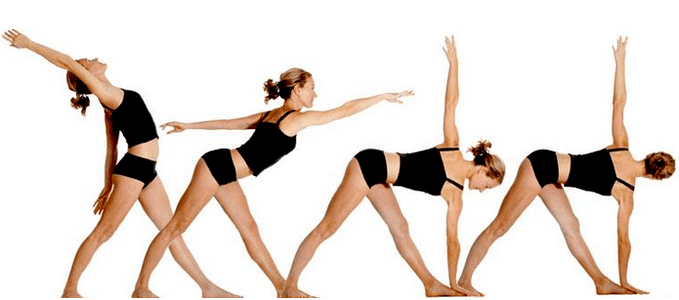
Place to sleep
Start by organizing a night out. During the acute phase, place a hard shield under a regular mattress. What type of mattress to use for osteonecrosis in the future?
In the absence of postural deformities - orthopedic. When there is curvature, the bed should be firmer.
The use of orthopedic pillows is recommended for cervical spondylosis.
After getting out of bed rest, the patient is advised to use a corset - in case of osteonecrosis, it unloads the affected segments, preventing spasms of weakened muscles. Its wearing time is determined by the doctor.
Nutrition
Review your diet. Perhaps, if the former wasn't ideal, the springboard for recovery would be . . . starve. It is known that the first fasting aggravates the disease, the subsequent fasts will cure it. How does fasting treat osteonecrosis? In essence, the disc is a small hydraulic shock absorber. Like water cushion, the impact of disc cushion. Alternating compression and release of pressure on the disc keeps it hydrated.
According to the author's method, dry fasting contributes to the removal of "waste", "dead" water from the tissues surrounding the disc and stimulates the regeneration of its own purified interstitial fluid.
Fasting should be done under the supervision of a doctor.
Physical education
The best remedy for osteonecrosis is physical education. Performing exercises to lengthen the spine and strengthen the muscles of the body, selected by the therapist, should become a daily rule. Training should be given in batches, several times a day, in intervals between exacerbations.
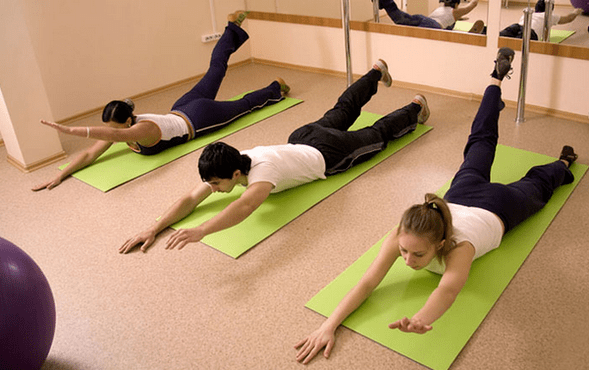
So, a modern, at the same time reasonable trend in the treatment of osteonecrosis is fractional gymnastics. The scheme can represent two phases: muscle tension through movements, amplitude slightly exceeding the existing range of motion in the joint or segment, and electrical muscle stimulation, combined with local exercise and reflexology. where the disease "hidden". .
As a result, there is relaxation of the vertebral muscles, followed by stimulation of the blood supply, which gives rise to regenerative processes.
Pain often signals serious "malfunctions" in the spine. So don't delay your visit to the doctor, and be healthy!

























